Downloaded 15 times
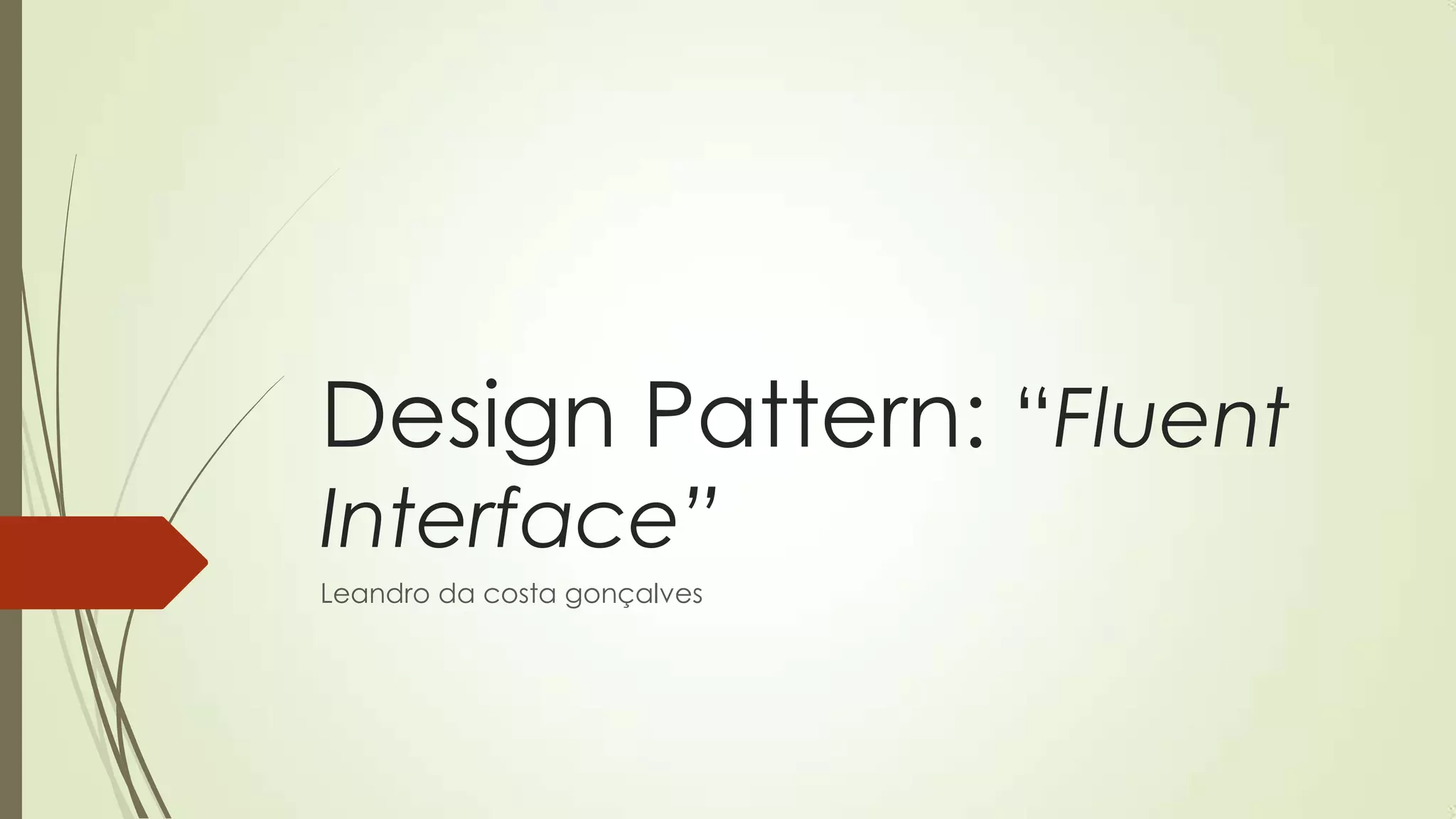

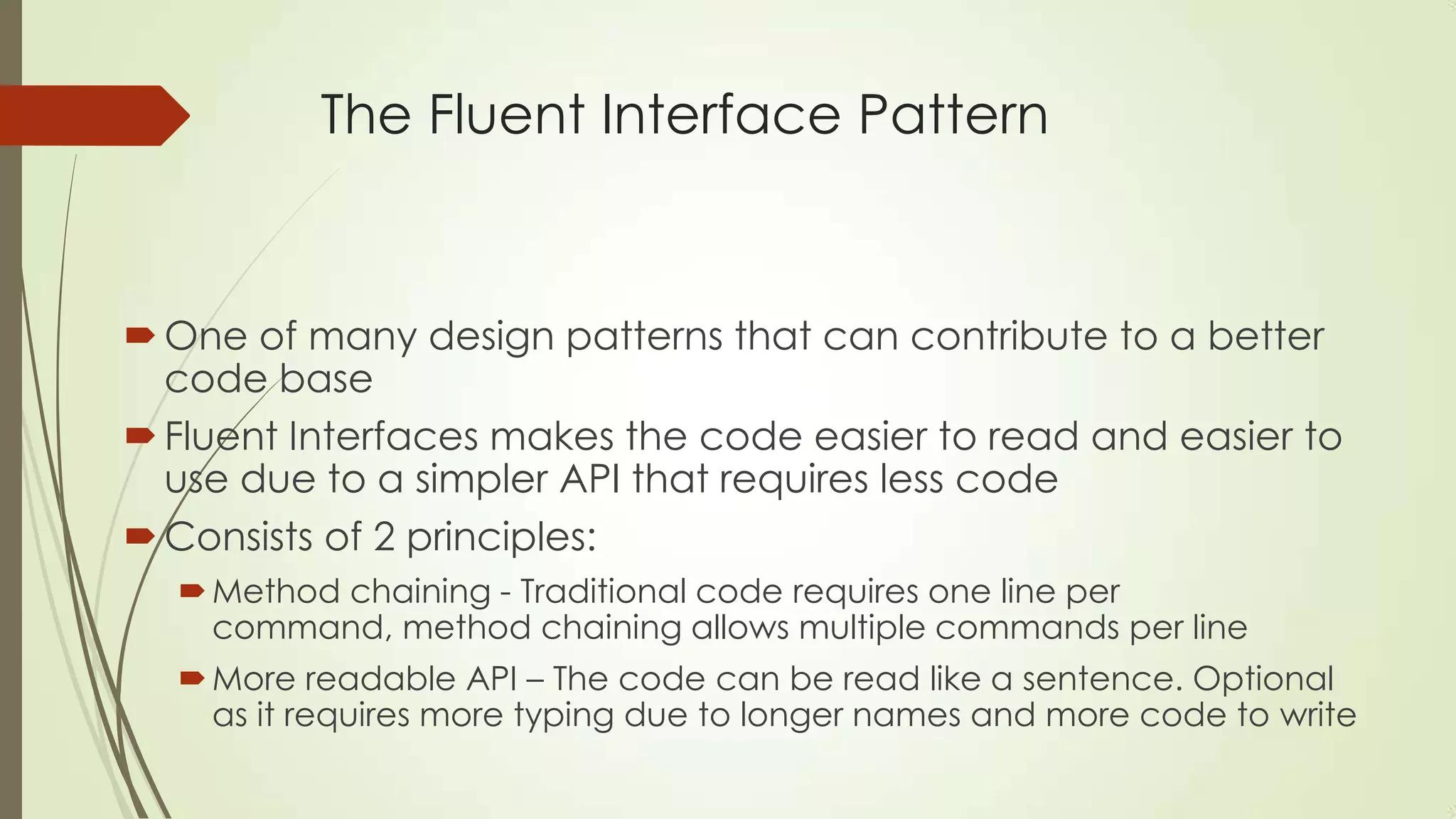

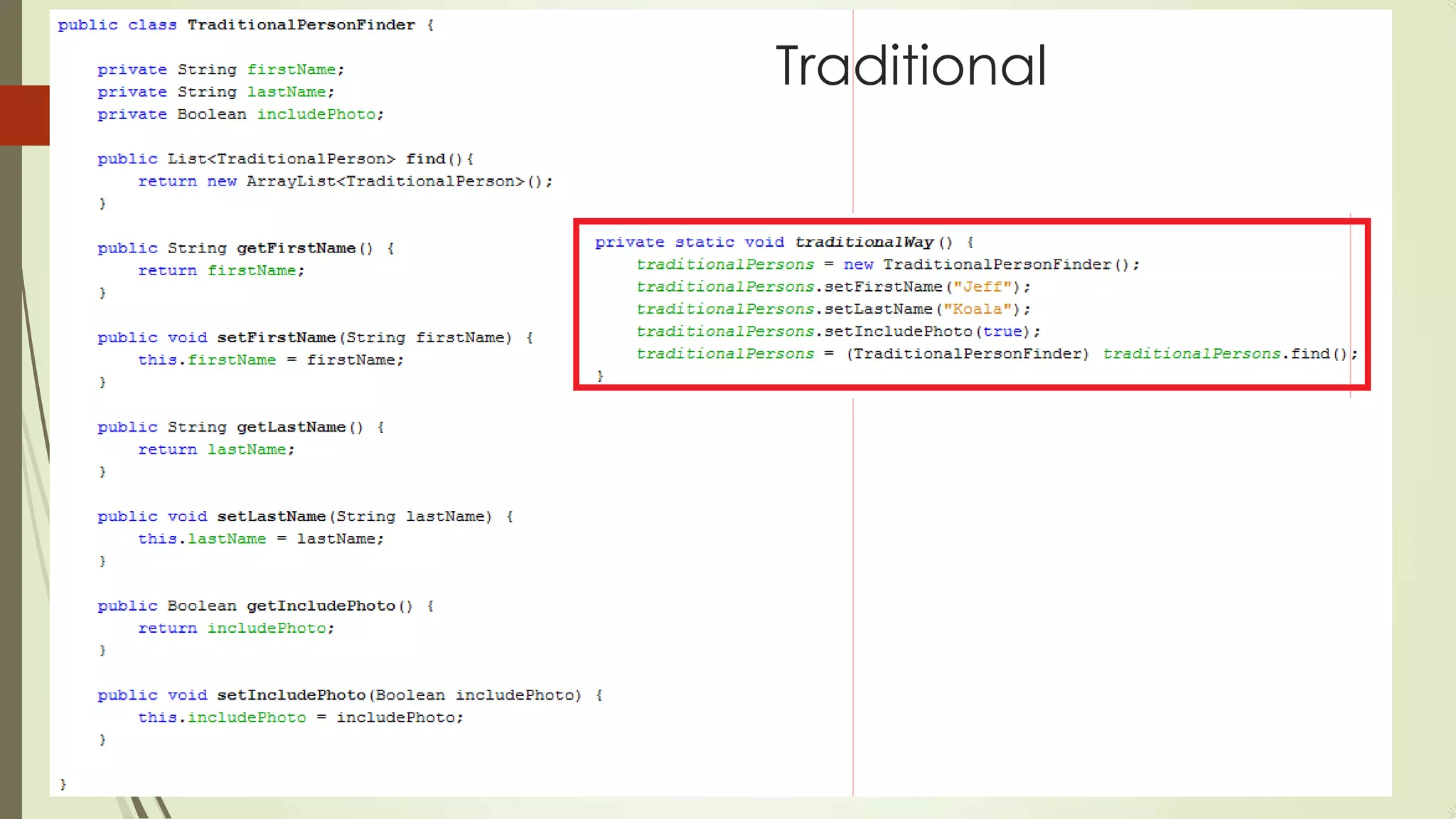

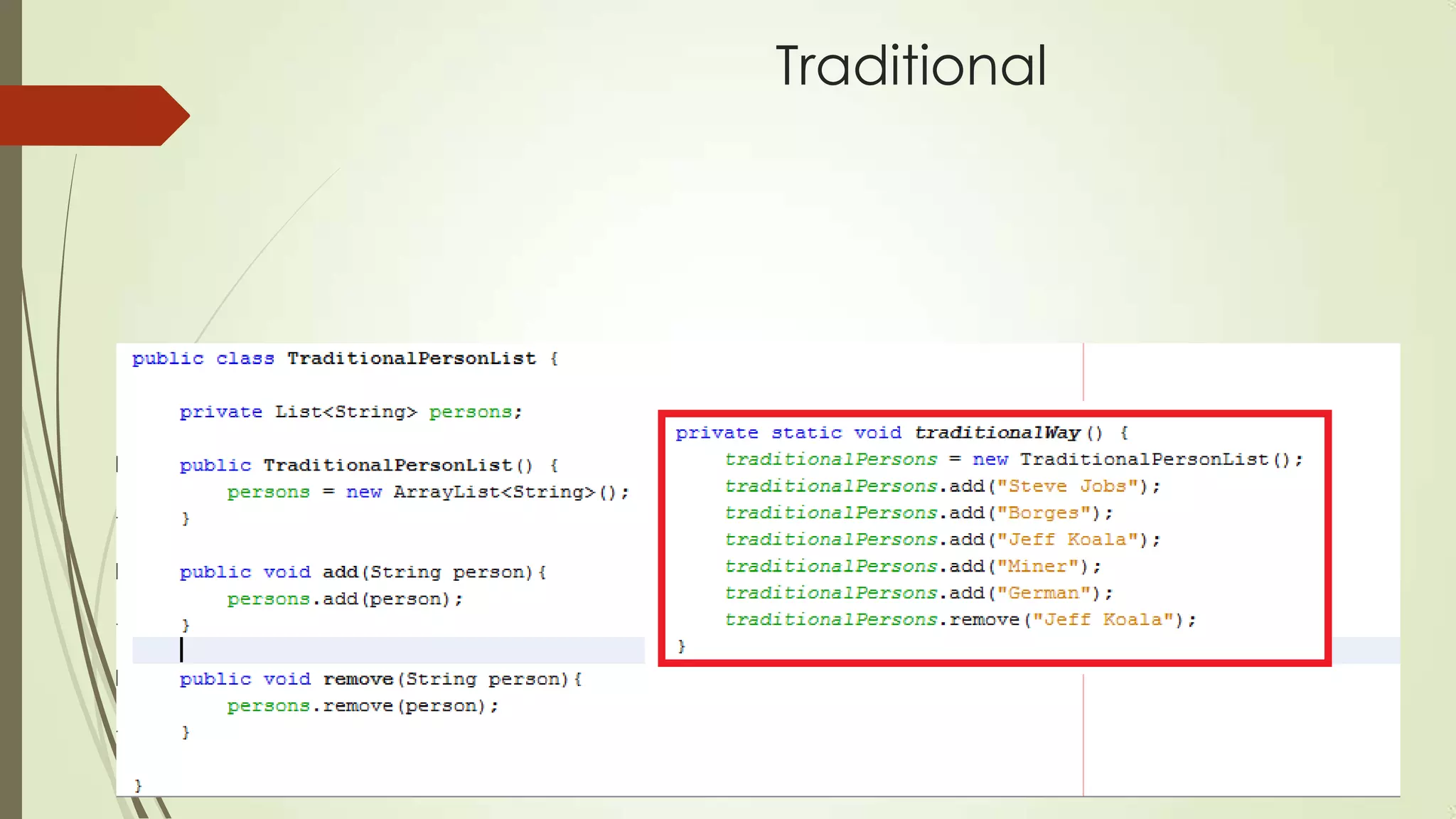
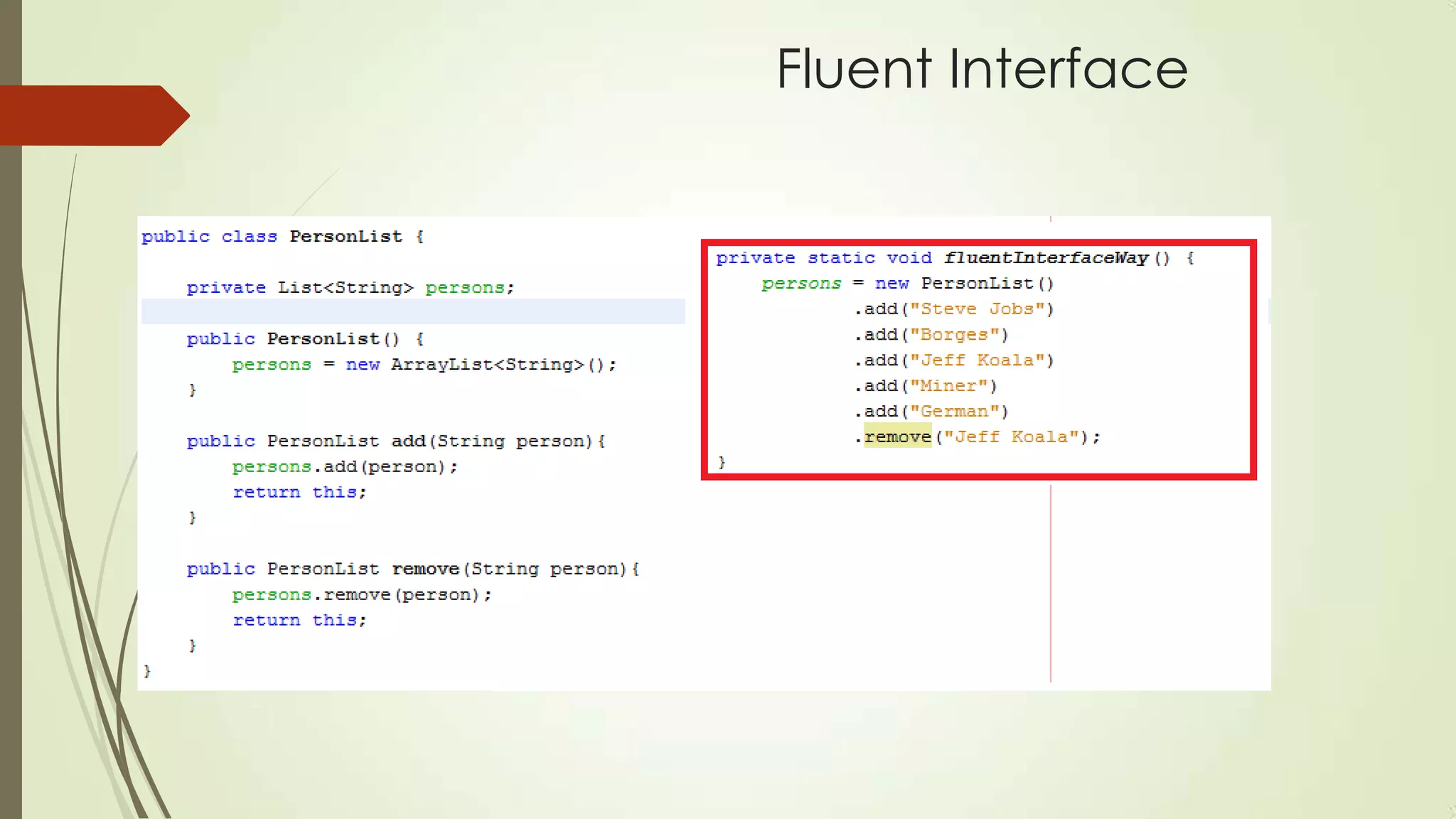



The document discusses the Fluent Interface design pattern, which allows method chaining to make code more readable by allowing multiple commands per line and reading like a sentence. It consists of method chaining and a more readable API with longer names. Fluent Interfaces are useful anywhere code readability can be improved, when methods are frequently invoked, with the Gateway pattern to hide complex code, and in frameworks.









